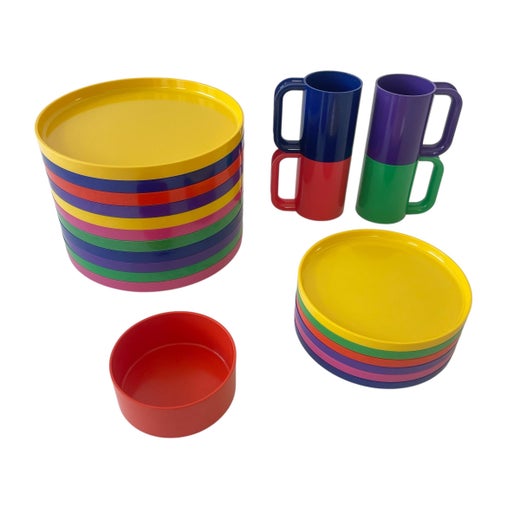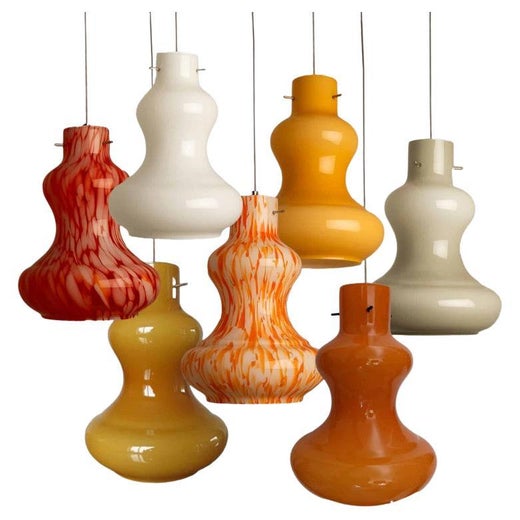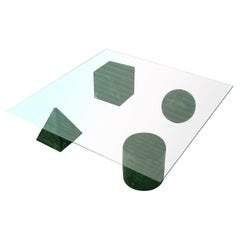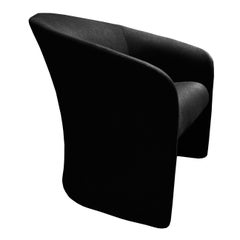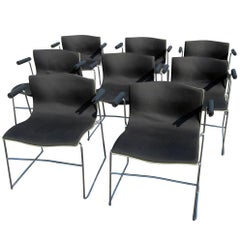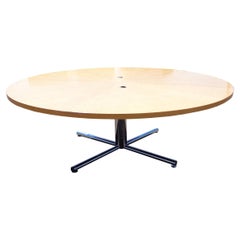Massimo and Lella Vignelli For Knoll Paperclip Table
About the Item
- Creator:
- Dimensions:Height: 28.5 in (72.39 cm)Diameter: 36 in (91.44 cm)
- Materials and Techniques:Chrome,Laminate,Wood
- Place of Origin:United States
- Period:Late 20th Century
- Date of Manufacture:1990's
- Condition:Very good.
- Seller Location:Pasadena, TX
- Reference Number:Seller: MR103301stDibs: U1103168671679
Massimo and Lella Vignelli
Massimo Vignelli and Lella Vignelli’s legacy can be seen everywhere in the logos of Bloomingdale’s, Ford and American Airlines, among others. In addition to their work in branding, they were prolific creators of modernist home furnishings, products and interiors, and the duo’s collaborations, which span 50 years, have left a profound mark on design and wider visual culture.
After meeting in Italy, Lella (1934–2016) and Massimo (1931–2014) began working together in 1961 and a decade later formed Vignelli Associates in New York. A self-described “information architect,” Massimo was committed to streamlining complex ideas into clear, visually arresting forms. (Witness the graphic identity that he cocreated with Bob Noorda for the New York City Transit Authority as well as his influential 1972 subway map.) The Vignellis’ most recognizable piece, for example, may be the Handkerchief chair, a stackable office chair made of compression-molded plastic that has the look of a cloth floating in air. It was created for Knoll in 1983 after they designed the brand’s logo.
Evidence of the couple’s influence can also be found in their Saratoga line (1964), the first collection of lacquered furniture, which helped herald in the trendy “glossy” look of the decade (and beyond). When the Vignellis created the Poltrona Frau Interview chair in 1988 for an Italian television station, it became widely sought after, “which goes to show you the power of the TV media,” the couple once said. Much like their elemental graphic designs, the Kono (1984) and Pisa tables (1985) — both created for Casigliani — cull the form of the table down to geometric shapes.
Vignelli furniture is often labeled as Massimo Vignelli’s alone, though he fought to have Lella recognized for her work, even throwing away magazines that neglected to give her due credit. As he wrote of their lifelong collaboration in his book Designed By: Lella Vignelli: “It is not holding a pencil with four hands that makes a partnership; it is sharing the creative act and exercising creative criticism which is reflected in the end result.”
Find vintage Massimo and Lella Vignelli seating, tables and other furniture today on 1stDibs.
Massimo Vignelli
Massimo Vignelli and Lella Vignelli are legendary names in branding and were prolific creators of home furnishings, products and interiors. The duo’s modernist furniture collaborations, which span 50 years, have also left a profound mark on design and wider visual culture. Furniture created by the couple is often labeled as Massimo Vignelli’s alone, though he fought to have Lella recognized for her work, even throwing away magazines that neglected to give her due credit.
As Massimo wrote of their lifelong collaboration in his book Designed By: Lella Vignelli: “It is not holding a pencil with four hands that makes a partnership; it is sharing the creative act and exercising creative criticism which is reflected in the end result.”
After meeting in Italy, Lella (1934–2016) and Massimo began working together in 1961 and a decade later formed Vignelli Associates in New York. A self-described “information architect,” Massimo was committed to streamlining complex ideas into clear, visually arresting forms. (Witness the graphic identity that he cocreated with Bob Noorda for the New York City Transit Authority as well as his influential 1972 subway map.) The Vignellis’ most recognizable piece, for example, may be the Handkerchief chair, a stackable office chair made of compression-molded plastic that has the look of a cloth floating in air. It was created for Knoll in 1983 after they designed the brand’s logo.
Evidence of the couple’s influence can also be found in their Saratoga line (1964), the first collection of lacquered furniture, which helped herald in the trendy “glossy” look of the decade (and beyond). When the Vignellis created the Poltrona Frau Interview chair in 1988 for an Italian television station, it became widely sought after, “which goes to show you the power of the TV media,” the couple once said. Much like their elemental graphic designs, the Kono (1984) and Pisa tables (1985) — both created for Casigliani — cull the form of the table down to geometric shapes.
Many of the Vignellis’ designs are considered modern masterpieces and are included in the collection of the Museum of Modern Art in New York and other important institutions.
Find vintage Massimo Vignelli furniture today on 1stDibs.
You May Also Like
Late 20th Century American Modern Dining Room Tables
Metal
1990s American Modern Dining Room Tables
Metal
Vintage 1980s Italian Dining Room Tables
Metal
21st Century and Contemporary Italian Modern Tables
Carrara Marble
Vintage 1980s Italian Mid-Century Modern Tables
Carrara Marble
Vintage 1980s Italian Modern Dining Room Tables
Metal
Vintage 1980s Italian Post-Modern Dining Room Tables
Granite, Copper
20th Century Italian Mid-Century Modern Coffee and Cocktail Tables
Carrara Marble
Vintage 1970s Italian Mid-Century Modern Console Tables
Glass, Wood
2010s European Tables
Marble
More From This Seller
View AllLate 20th Century European Modern Coffee and Cocktail Tables
Marble
Vintage 1980s Canadian Mid-Century Modern Lounge Chairs
Fabric
Late 20th Century American Office Chairs and Desk Chairs
Chrome
Vintage 1970s North American Mid-Century Modern Dining Room Tables
Birdseye Maple
Vintage 1930s American Dining Room Tables
Maple
Vintage 1960s American Art Nouveau Tables
Marble
Still Thinking About These?
All Recently ViewedRead More
The Italian Husband-and-Wife Duo Who Redefined Design in America
For six decades, the multidisciplinary New York City studio of Massimo and Lella Vignelli produced some of the most powerful visual expressions of our age, from graphics to jewelry to furniture.
The 21 Most Popular Mid-Century Modern Chairs
You know the designs, now get the stories about how they came to be.
